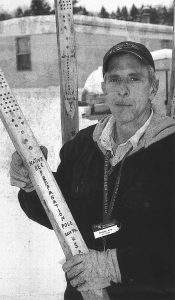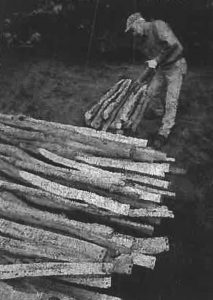
An Erie man might have found an answer to the mysterious worldwide epidemic of bee die-offs. Chester Lee calls it a “bee pole.” It’s a simple invention: a 6-foot tall piece of decomposing timber that he smooths out and drills a series of holes into. Bees use it as a habitat to lay their eggs. The bee pole works so well that Lee was invited to install a bee pole at the Smithsonian Institution in Washington, D.C., in January.
President Barack Obama spoke about the American spirit of innovation in his inaugural address. Perhaps he’ll have a chance to visit the Victory Garden at the Smithsonian Institution in D.C. where a Summit Township master gardener has planted his discovery.
Chester Lee calls his handiwork a “bee pole.” He drills holes into decomposing timber, which gives off carbon dioxide. With 125 or so holes in the timber, bees find a habitat to lay their eggs. Bees are necessary for crop pollination. “These poles could add another link to our knowledge about bee life and the way they carry on,” says Gary Hevel, an entomologist for the Smithsonian Institution and an amateur beekeeper. Hevel says it’s important to keep looking for solutions to “colony collapse disorder,” which has wiped out many bee colonies. Lee would like to see bee poles planted in every state capital by Earth Day, which is April 22.
Erie-Times News Feburary 7, 2009

Chester Lee, master gardener from Summit Township, showed his bee poles at the Lake Erie Arboretum of Frontier Park Festival on Saturday. Lee’s patented bee poles are 6 feet of decomposing timber that he drilled holes into to attract bees.
Take the first step in doing your part to help save and protect native pollinators.

